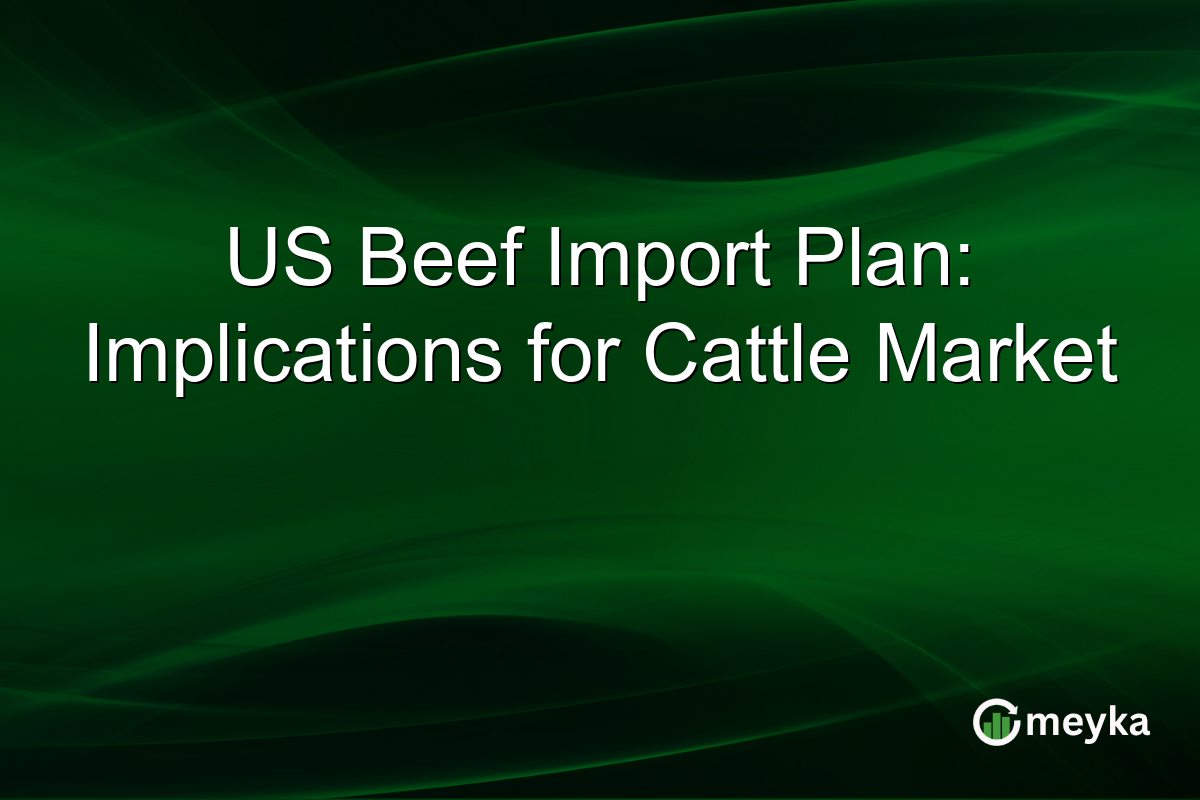US Beef Import Plan: Implications for Cattle Market
The US beef import plan has stirred significant attention in the agriculture sector. Spearheaded by Agriculture Secretary Brooke Rollins, the initiative aims to import Argentinian beef to stabilize US consumer prices amidst fluctuating domestic beef production. However, this plan faces backlash from domestic cattle producers worrying about price depressions.
The US Beef Import Plan: A Strategic Initiative
The US beef import plan is rooted in the need to address rising consumer prices. Recently confirmed by Agriculture Secretary Brooke Rollins, this strategic import from Argentina is expected to inject up to 500,000 tons of beef into the US market annually. This move aims to augment domestic supply, potentially easing high beef prices that have plagued consumers over the past year. However, critics argue that the plan might undermine local producers who aggressively compete in the market for a fair share. [Source: https://civileats.com/2025/10/21/agriculture-secretary-confirms-us-plan-to-buy-beef-from-argentina/]
Concerns from Domestic Producers
Despite the potential benefits for consumers, US cattle producers are expressing valid concerns. Introducing Argentinian beef could lead to an oversupplied market, suppressing prices and hurting farmers’ earnings. The National Cattlemen’s Beef Association has voiced strong opposition, warning that domestic livelihoods could be at risk. This situation presents a dilemma where balancing consumer benefits and producer stability becomes a challenging task. [Source: https://www.dtnpf.com/agriculture/web/ag/columns/washington-insider/article/2025/10/22/ag-secretary-plugs-3-billion-aid]
Market Dynamics and Economic Implications
The cattle market impact of importing beef is multifaceted. While the US enjoys the potential for stabilized consumer prices, producers may face increased competition. Historically, fluctuations in supply have directly affected cattle prices, where additional imports could depress market rates. This development has investors and traders closely scrutinizing agricultural policy changes, influencing market sentiment and future investment decisions.
Final Thoughts
In conclusion, the US beef import plan presents a complex scenario with both opportunities and risk factors. While Brooke Rollins’s initiative seeks to stabilize consumer prices and strengthen supply chains, it also faces challenges from domestic producers fearing economic strain. For investors, this development highlights the intricate balance between policy, market demands, and economic outcomes, presenting both a challenge and an opportunity. Monitoring further policy adjustments and market reactions will be crucial for making informed decisions.
FAQs
The plan aims to stabilize prices by increasing US beef supply through imports from Argentina, addressing consumer price hikes due to limited domestic production.
Producers are worried that increased supply from imports could lower market prices, impacting their earnings and market share significantly, leading to economic concerns.
Investors should consider both the benefits of potential price stabilization for consumers and the risks associated with producer opposition, which could affect market dynamics and future policy.
Disclaimer:
This is for information only, not financial advice. Always do your research.






